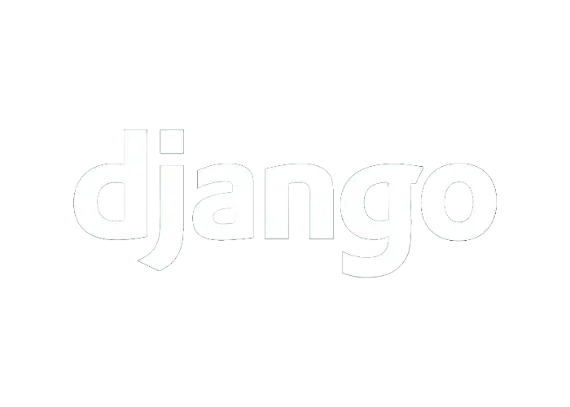Location-based marketing techniques like geotargeting and geofencing are becoming increasingly important for businesses looking to connect with customers in a meaningful way. With so many consumers now using smartphones and mobile devices, having the ability to reach them based on location provides tremendous opportunities to deliver relevant messaging and offers at exactly the right place and time.
In this comprehensive guide, we’ll explain what geotargeting and geofencing are, the benefits and use cases of these location-based targeting tactics, and tips for successfully implementing them as part of your overall marketing strategy. Let’s dive in!
What is Geotargeting?
Geotargeting refers to targeting users based on their geographic location. This approach allows marketers to deliver specific messaging and content to customers based on not just demographics but also where the users actually are physically located.
For example, a restaurant can geotarget users within a certain mile radius of its locations and serve them ads encouraging them to come in to dine. Or a retailer can target customers near one of its brick and mortar stores with an offer for in-store pickup or location-specific promotion.
Geotargeting relies on collecting location data from users’ devices such as smartphones, tablets, and laptops. With user consent, locations can be determined via GPS, Wi-Fi networks, cell tower triangulation, IP addresses, and other contextual signals.
This location data allows marketers to target and personalize messaging in a variety of ways:
- Location-specific ads: Display ads that are only shown to users within a defined geographic radius.
- Location-based push notifications: Send notifications to users when they are near certain locations such as stores, venues, etc.
- Geo-conquesting: Target users near competitors’ locations with ads and offers.
- Location-based content: Provide content that is tailored to a user’s city or region.
- Store locators: Allow users to find nearby store or business locations.
What is Geofencing?
Geofencing is a location-based marketing technique that enables marketers to draw a virtual boundary around a specific geographic area. This could be around a landmark, city, zip code, or custom region.
The marketer can then target users within that defined zone and trigger actions when users enter or exit the boundaries.
For example, a coffee shop chain can set up a geofence around each of its store locations. Whenever a user enters that geofenced area, they can be sent a mobile offer for a free coffee or discount.
Geofencing relies on the same location-detection methods as geotargeting like GPS and Wi-Fi positioning. However, it takes targeting a step further by not just looking at a general location but whether a user actually crosses into a pre-defined space.
Here are some of the key use cases for geofencing in marketing:
- Send offers to draw customers to physical stores when they are nearby
- Welcome new customers who enter a business location for the first time
- Remind customers about appointments when they arrive at an office
- Prompt app users to check in on social media at events
- Serve airport passengers hyper-local offers as they arrive at terminals
- Analyze dwell times to see how long people stay in specific locations
Benefits of Geotargeting and Geofencing
Now that we’ve covered the core concepts, let’s look at some of the benefits location-based targeting can offer:
Highly Targeted, Localized Messaging
The top benefit of geotargeting and geofencing is the ability to deliver content that is extremely relevant based on exactly where a user is physically located. This allows for highly localized, hyper-targeted messaging.
Brands can zero in on users who are just down the street from a store location versus those who are across the country. And in turn, users get ads and offers for businesses near them instead of generic irrelevant ads.
Flexibility to Target Any Location
Another great advantage of geo-based targeting is that marketers can draw boundaries around virtually any location they want.
Targeting can be done around specific buildings like stores and offices, broader city-wide regions, a radius from a central point, Zip codes, states, and any custom polygon regions.
This flexibility allows for very fine-tuned messaging for local circumstances. Brands can geo-fence highly specific areas like airports, malls, college campuses, and more.
Real-Time Engagement Opportunities
Because geotargeting and geofencing are based on a user’s current location, it allows you to engage them in real-time as they pass by your business.
This presents powerful opportunities to drive conversions by prompting users to take action when they are already primed and ready.
For example, a coffeehouse can send a discount to someone as soon they walk to work past the store in the morning when they are thinking about getting coffee. The convenience and immediate relevance is likely to drive more conversions than a generic online ad.
Insights on Physical Store Traffic Patterns
Location-based targeting also provides invaluable foot traffic data. Retail brands can gain visibility into how many customers visit stores, how long they dwell there, what days and times are peak periods of activity, and more.
These types of geographic and behavioral insights can really help optimize marketing spend and locations. Brands can identify high-performing locations to invest more in or underperforming stores that may need reassessment.
Integration with CRM Data for Personalization
When combined with CRM data like purchase history and preferences, geotargeting and geofencing allow for even more robust personalization.
Brands can segment and target customers based on past behaviors and location.
For example, a clothing retailer can remind lapsed customers of nearby store locations when they are in the vicinity to try and re-engage them. Or a hotel chain can send special offers to loyalty members when they are traveling and near a hotel property.
Attribution and Measurement
Measuring the ROI and impact of digital marketing efforts can be challenging. However, geotargeting and geofencing provide clear attribution because you can see exactly who enters a specified region and what actions they take.
The ability to directly attribute conversions to location-based targeting provides justification for marketing spend. Brands can calculate metrics like cost per store visit, engagement rate within a geo-fence, and more.
Top Use Cases and Tactics
Now that we’ve covered the basics of geotargeting and geofencing, let’s look at some effective real-world uses cases and tactics.
Here are some of the top ways industry leaders are using location-based targeting to boost marketing performance:
Retail Marketing:
- Target promotions to nearby users to drive in-store traffic
- Geofence around competing stores to conquest new shoppers
- Offer location-based coupons and discounts
- Remind users about dress fittings or alteration pick-ups when near store
- Analyze foot traffic patterns across locations
Restaurant Marketing:
- Target food delivery when users are at home or work
- Alert users to happy hour when they are downtown after work
- Send discounts to lapsed users near the restaurant
- Geofence around the competition and stadium events to promote
- Measure store visit duration after promotions
Events and Entertainment:
- Alert users about upcoming concerts and shows when near the venue
- Prompt users to post on social media when they arrive at the event
- Send reminders when they are en route to the event location
- Offer discounts on additional tickets to those already attending
- Analyze dwell time to see peak periods of activity
Travel and Hospitality:
- Send special offers when guests arrive at their hotel
- Target airport travelers for park and fly parking when they arrive at the airport
- Cross-sell upgrades and amenities when guests are on-site
- Offer discounts on transportation to nearby attractions and restaurants
- Measure foot traffic in lobbies, casino, restaurants to optimize operations
B2B Marketing:
- Target ads when users are at industry conferences and events
- Geofence around prospective client offices and locations
- Remind users about appointments as they arrive
- Analyze foot traffic insights to inform sales and outreach
- Provide location-specific content and offers
As you can see, whether you are in retail, real estate, events, hospitality, or B2B, there are so many creative ways to integrate geotargeting and geofencing into your marketing.
Best Practices for Success
Now that we’ve provided an overview of location-based marketing and top use cases, let’s conclude with some best practices you can follow to achieve success:
Provide Value to Users
Location-based targeting allows for highly relevant ads and offers. But be sure the message truly adds value rather than just being intrusive. Tailor the content to each geo-targeted scenario.
Make It Frictionless
- Minimize friction by not requiring complex registration or login just to access location-based content. Personalization should happen automatically once a user enters a geo-fence.
Offer a Clear Call-To-Action
Prompt users to take a specific action like visiting a store, claiming a discount, or engaging with your app. Make it easy for location-targeted users to convert.
Focus on Timeliness and Proximity
- Target users when they are as close as possible both physically and temporally. Don’t send irrelevant out-of-context messages.
Avoid Oversaturation
- Be strategic with location-based triggers and don’t oversaturate users. Allow for opt-outs and frequency capping to avoid message fatigue.
Measure Lift and Attribution
- Leverage analytics to measure the incremental lift generated by geo-targeted campaigns vs. non-targeted groups. Prove the value of hyper-local personalization.
Integrate with CRM and Campaigns
- Incorporate geotargeting and geofencing into existing marketing campaigns and CRM initiatives to amplify results. Location can enhance multi-channel efforts.
Make Compliance a Priority
- Always comply with local laws, regulations, and privacy policies when collecting and leveraging user location data responsibly. Transparency is key.
Conclusion
Location-targeted marketing techniques like geotargeting and geofencing provide immense opportunities to drive engagement, foot traffic, and sales. With the rise of the mobile consumer, a user’s physical location presents a goldmine of data to improve relevance and personalization.
Brands who learn to master geo-based targeting and provide value to location-aware users will have a leg up on the competition. With the right use cases, creative tactics, and strategic implementation, geotargeting and geofencing can transform marketing effectiveness. Find out today how Kief Studio can help you and your business!
Get Started Today!








